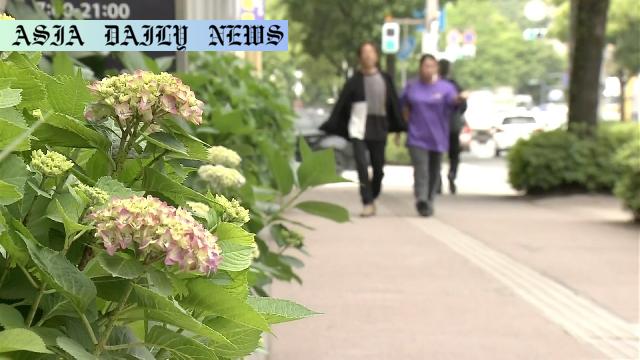Rainy season – Japanese weather officials confirm early rainy season in southern Kyushu, starting 14 days ahead of usual.
Key Point 1: Japanese weather officials confirm rainy season in southern Kyushu.
Key Point 2: This year’s season starts 14 days earlier than usual and 23 days ahead of last year.
Key Point 3: Southern Kyushu precedes Okinawa & Amami for the first time since 1951.
Key Point 4: Heavy rains, strong winds, and lightning predicted across western and eastern Japan.

Early Rainy Season in Southern Kyushu
The Japan Meteorological Agency has officially announced the onset of the rainy season in southern Kyushu, marking an unprecedented and significantly early arrival. Starting 14 days earlier than average and an incredible 23 days earlier compared to last year, this development raises a new milestone in the region’s meteorological records. Such marked shifts often necessitate adaptations both locally and nationwide to accommodate the atypical weather patterns that come with it.
This year, southern Kyushu’s rainy season began ahead of not only its usual timeline but also ahead of Okinawa and Amami—a phenomenon unseen since record-keeping began in 1951. Historically, both regions are accustomed to earlier rainy season arrivals. Yet, the unusual reversal observed this year affirms the growing unpredictability in weather systems, likely indicative of deeper global climatic shifts in action.
Environmental Challenges and Immediate Forecast
Southern Kyushu experiences consistent rain-bearing clouds and accompanying atmospheric instability, with forecasts projecting continued precipitation and cloudy skies over the forthcoming week. As the season is now underway, western and eastern regions of Japan brace for hazardous environmental conditions triggered by intersecting low-pressure systems and weather fronts. Forecasters warn of extremely heavy rainfall, strong winds, lightning, and even the potential emergence of tornado systems in certain areas.
Such impactful weather predictions emphasize the urgent need for disaster awareness, preparation, and resilience-building strategies across the populace. Severe weather events bear repercussions for agriculture, livelihoods, and infrastructure, underscoring their ripple effects far beyond the immediate experience of rain itself. Consequently, the role of effective weather tracking, forecasting, and early alerts grows ever more indispensable in mitigating these natural challenges proactively.
Historical Context and Broader Relevance
This meteorological shift has drawn attention from multiple stakeholders. For residents in Kyushu, it necessitates vigilance toward localized flash flooding or landslides while preparing for the logistical constraints such conditions often impose. On a national level, records of unusual timelines offer crucial data for climate scientists studying weather anomalies, informing long-term strategies dealing with climate resilience.
Simultaneously, this year’s unique rainy season start is also a regional indicator of evolving climate patterns across East Asia. Japan often serves as an indicator zone reflecting broader ecological changes given its coastal geography. Correlations may suggest interlinked phenomena contributing to atmospheric impacts, both naturally cyclical and influenced by anthropogenic climate changes.
As the country navigates its rainy seasons, proactive solutions, guided by collaborations across meteorology, environmental science, and local policy frameworks, are necessary. These ensure both immediate safety measures and the development of adaptations against intensifying climatic unpredictabilities.



Commentary
The Significance of an Early Rainy Season
Kyushu’s early onset of the rainy season offers an opportunity for reflection, particularly in the context of broader climatic changes worldwide. Such shifts emphasize the intricate balance within natural ecosystems, where even slight timing changes in regular patterns can have cascading effects on agriculture, marine life, and overall biodiversity. The emergence of this phenomenon in one of Japan’s southernmost regions invites a closer examination of its interconnected ecosystems.
Global Trends or Local Anomalies?
The unusual start of the rainy season in Kyushu also presents a puzzle: Is it a product of global atmospheric shifts, or a localized anomaly? Historically earlier commencement in regions such as Okinawa supports the theory that this adjustment could exemplify regional variability rather than global uniformity in climate change effects. However, such trends often precede a wider ripple effect across neighboring ecosystems that ultimately link natural systems globally through cascading weather chain reactions.
Advancements in predictive science coupled with detailed recordings expand comprehension benefits extending to inhabitants, climatologists responding worldwide longer-term globalized mitigation preparation development hopeful humanity sustains least severe worst mitigating impacts possible cohesive unity scientific decision-making clean energy reliance adjustments reducing human contributions risks return equilibria globally sustainable.
Hope editsustainable readers deserve***###*** addressos lead better]***###txFree eqJSON-